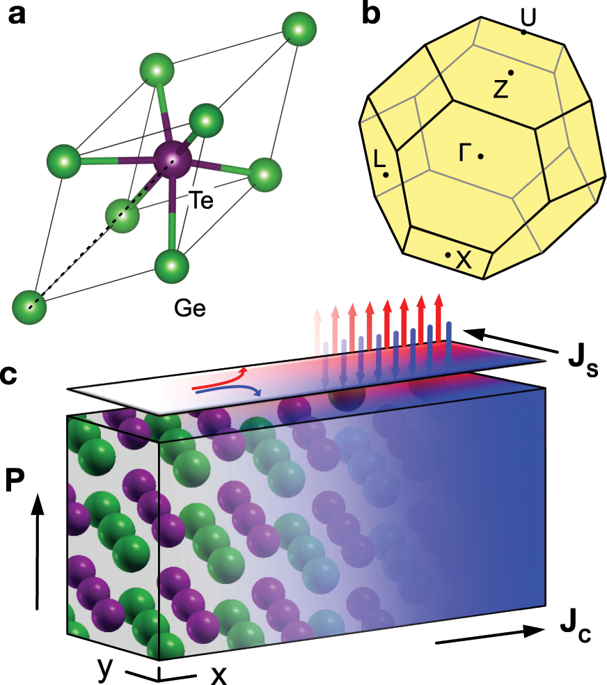npj Computational Materials ( IF 9.4 ) Pub Date : 2020-01-24 , DOI: 10.1038/s41524-020-0274-0 Haihang Wang , Priya Gopal , Silvia Picozzi , Stefano Curtarolo , Marco Buongiorno Nardelli , Jagoda Sławińska

|
Ferroelectric Rashba semiconductors (FERSCs) have recently emerged as a promising class of spintronics materials. The peculiar coupling between spin and polar degrees of freedom responsible for several exceptional properties, including ferroelectric switching of Rashba spin texture, suggests that the electron’s spin could be controlled by using only electric fields. In this regard, recent experimental studies revealing charge-to-spin interconversion phenomena in two prototypical FERSCs, GeTe and SnTe, appear extremely relevant. Here, by employing density functional theory calculations, we investigate spin Hall effect (SHE) in these materials and show that it can be large either in ferroelectric or paraelectric structure. We further explore the compatibility between doping required for the practical realization of SHE in semiconductors and polar distortions which determine Rashba-related phenomena in FERSCs, but which could be suppressed by free charge carriers. Based on the analysis of the lone pairs which drive ferroelectricity in these materials, we have found that the polar displacements in GeTe can be sustained up to a critical hole concentration of over ~1021/cm3, while the tiny distortions in SnTe vanish at a minimal level of doping. Finally, we have estimated spin Hall angles for doped structures and demonstrated that the spin Hall effect could be indeed achieved in a polar phase. We believe that the confirmation of spin Hall effect, Rashba spin textures and ferroelectricity coexisting in one material will be helpful for design of novel all-in-one spintronics devices operating without magnetic fields.
中文翻译:

原型Rashba铁电体GeTe和SnTe中的自旋霍尔效应
铁电Rashba半导体(FERSC)最近成为一种有前途的自旋电子材料。自旋和极性自由度之间的特殊耦合导致了几种特殊的性能,包括拉什巴自旋结构的铁电转换,这表明仅通过使用电场就可以控制电子的自旋。在这方面,最近的实验研究揭示了两个典型的FERSC(GeTe和SnTe)中的电荷转自旋互变现象,似乎极为相关。在这里,通过使用密度泛函理论计算,我们研究了这些材料中的自旋霍尔效应(SHE),并表明它在铁电或顺电结构中都可能很大。我们进一步探讨了在半导体中实际实现SHE所需的掺杂与确定FERSC中Rashba相关现象的极性畸变之间的兼容性,但是极性电荷可以被自由电荷载流子抑制。基于对这些材料中驱动铁电的孤对的分析,我们发现GeTe中的极性位移可以维持到约10的临界空穴浓度以上21 / cm 3,而SnTe中的微小变形在最小掺杂水平下消失。最后,我们估计了掺杂结构的自旋霍尔角,并证明了在极性相中确实可以实现自旋霍尔效应。我们相信,在一种材料中同时存在自旋霍尔效应,Rashba自旋纹理和铁电的确认将有助于设计新颖的无磁场的多合一自旋电子器件。











































 京公网安备 11010802027423号
京公网安备 11010802027423号